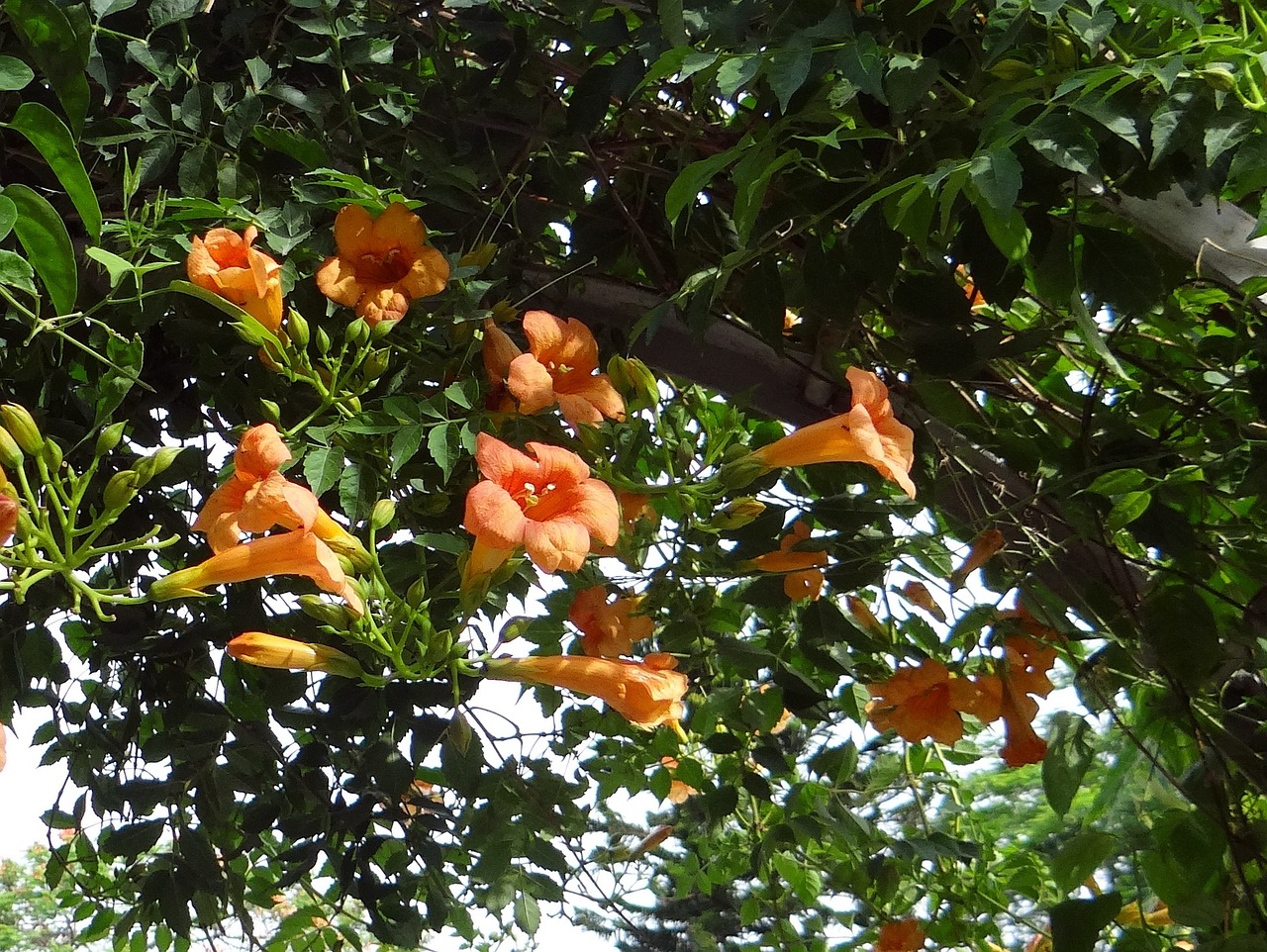Milkweed for Monarchs, Bring on the Beans, Cosmos and Japanese Beetles
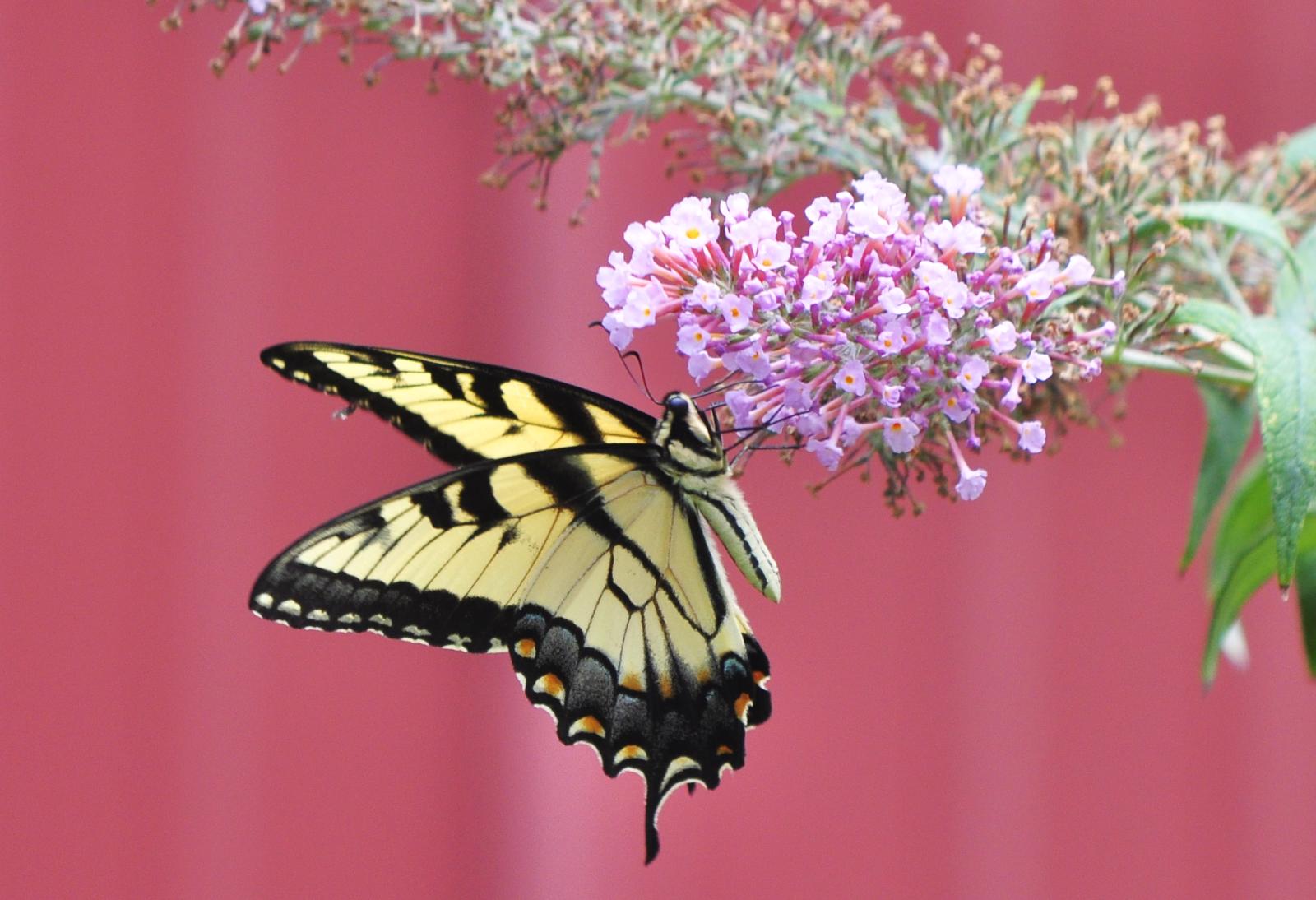
Summer is here in our zone 5 Vermont garden in a big way. With record setting temperatures and lots of moisture still in the soil, plants are exploding with growth. Fortunately, we stayed on top of weeding earlier this month, so it’s manageable now. But insects have arrived. Most of the insects in our garden are neutral or beneficial. And some are even rock stars.
Monarch butterflies have gotten a lot of press for their impressive flights to breeding grounds in the North to overwintering sites in the South. Lots of gardeners would love to support these orange butterflies in their flights. One way to help is to grow milkweed, their favorite plant. However, you have to be careful about which species of milkweed you grow or it can become a weed. Learn more about Milkweeds for Monarchs in this newsletter.
Our bush beans are looking good and many gardeners in warmer climates are eating fresh beans already. But there is more to beans than the green, yellow or purple podded snap beans we grow. I talk about some of the”other” beans such as edamame, lima beans, fava beans and asparagus beans in this newsletter, Read on!
Our annual flowers are perking up with the warmer temperatures. It’s not too late to purchase more annual flowers for the garden. Many garden centers are still packed with plants. Cosmos is a favorite. This flower dances in the breeze and can stay a few feet tall so puts on quite a show come late summer. Learn more about growing cosmos here.
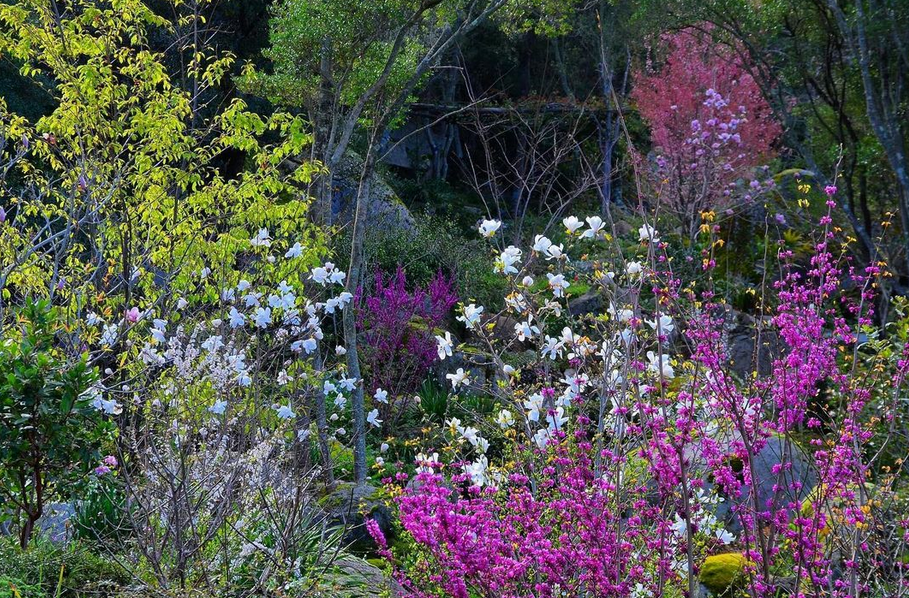
Yes, it’s Japanese beetle season. The adults will be emerging soon and will start laying waste to 300 or more garden plants. I talk about ways to controls the adults here with a good long term strategy for the grubs in this newsletter.
You may remember I’ve recently returned from a Garden Tour of Sardinia, Italy, It was a great tour and we’re planning our tour schedule for 2026. Let me know if you want to be on the list when we send out information on the 2026 Garden Tours. For now, here’s a short video on our Sardinia trip. Enjoy!
Remember to check out my monthly garden blog I write for Proven Winners called What’s Up North. The June blog features some great flowering vines.
Until next time I’ll be seeing you, in the garden.
Charlie

Where to Find Charlie: (podcasts, TV and in-person)
- In the Garden (WCAX-TV CBS) – This week: Japanese Beetle Controls
- All Things Gardening on Vt Public Radio– This week: Listener’s Questions
- WJOY In The Garden Podcast– This week: Cucumber beetles, Japanese beetles, early summer flowering shrubs, replanting beans, what kinds of tools every gardener needs and more
- Where’s Charlie Speaking? 6/7-8/25- Bus Tour Isabella Stewart Gardner Museum and NE Botanical Garden, MA.
Milkweed for Monarchs
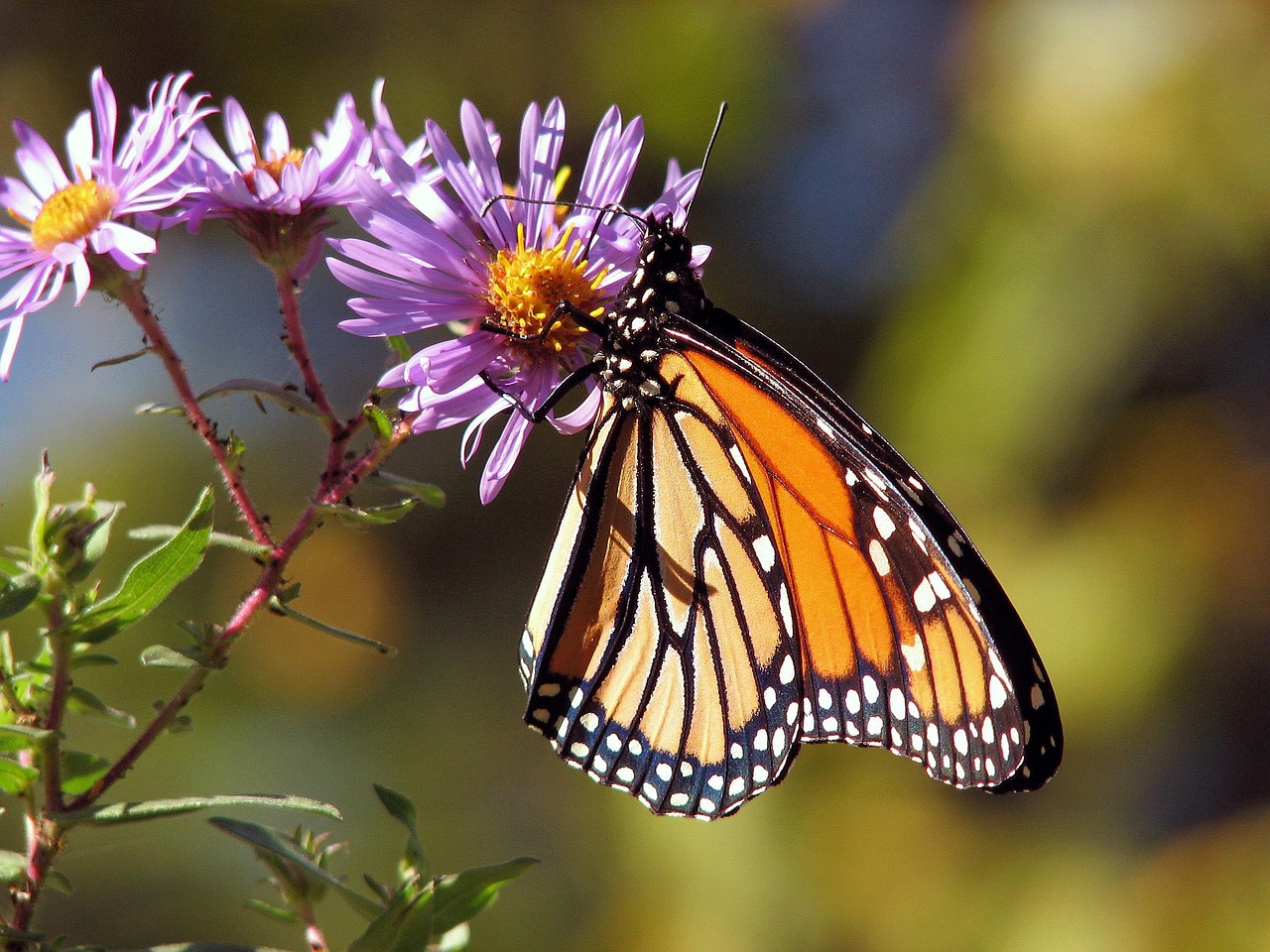
Monarch butterflies have become the poster child for the save the butterflies movement. These extraordinary butterflies fly thousands of miles to breed and then to overwinter in a warmer climate. Gardeners are enchanted with Monarchs and would love to help them on their journey. One way to do that is to plant a Monarch friendly garden. Monarchs have a special relationship to milkweed. They lay eggs on the leaves. The larvae feeds on the leaves and the adults use the flowers for food. So growing milkweed is often recommended for butterfly gardeners. However, there’s one catch. The common milkweed (Ascelpias syriacus) is an aggressive plant that can become a weed in your garden. Just ask farmers how it invades their pastures.

A better solution is to grow one of the other species of milkweeds that are less aggressive, more adapted to different soil and sun conditions and still favored by Monarchs. Swamp milkweed, Asclepias incarnata, has attractive pink flowers and thrives in moist to wet soils. There’s a white flowered version called ‘Ice Ballet’ as well. Purple milkweed, Asclepias purpurascens, has purple flowers, loves the sun and tolerates dry soils. White milkweed, Ascpelias variegata, produces small, white blossoms and thrives in poor, dry soils. And butterfly weed, Asclepias tuberosa, has orange or yellow flowers depending on the variety, and grows well in most garden soils.
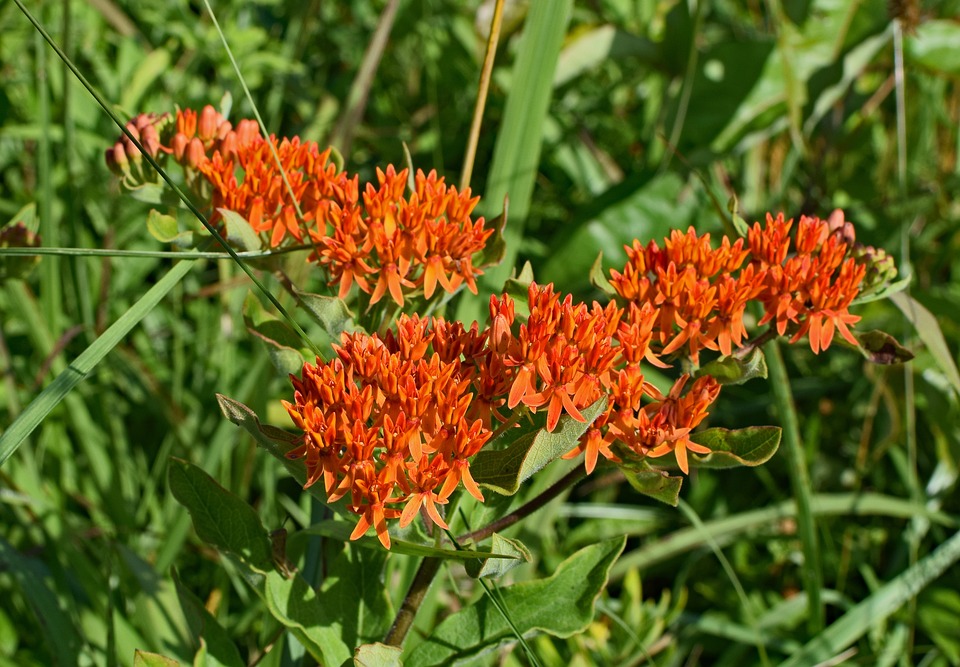
Plant milkweed in full sun on well drained soil. Plant in groups to attract the most Monarchs. While making a garden for butterflies that includes milkweed is a good idea, for just the Monarchs, they prefer a larger swath of land just for them. Cut down your milkweeds in fall and weed out stray plants each spring if you don’t want it to spread.
Read more and listen about Milkweed for Monarchs here
Bring on the Beans

There’s nothing like fresh bush beans from the garden. And they are so easy to grow. We’re expecting our first crop soon and I’m planting more for late summer and fall. We can plant bush beans until the end of July in our zone 5 garden and still get a crop.
But there’s more to beans than the green, wax (yellow) and purple skinned bush beans. We grow a number of other beans that are work a try.
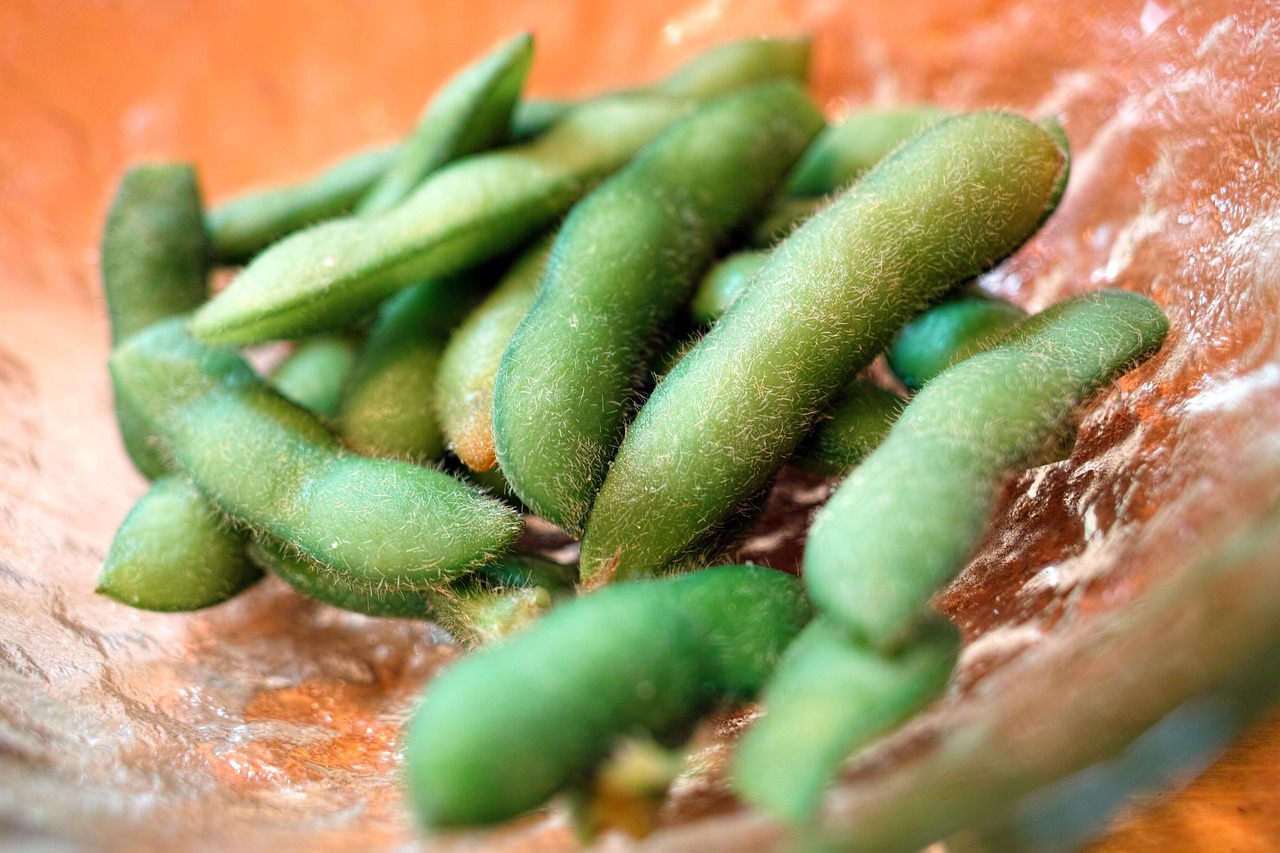
Edamame is a favorite bean family veggie. It’s a soybean that’s eaten at the immature or green stage. It’s a favorite in Asian cooking and we grow it like our bush beans. I like the ‘Midori Giant’ variety. It matures a little later than bush beans, but the pods are produced in abundance on the plants. Simply steam the mature pods once they fill out, squeeze the pods after steaming and out pops the edamame bean. Kids love them!
Lima beans are large beans that many gardeners avoid, but are really tasty especially when cooked with other veggies in succotash. Limas love the heat so now is a great time to plant them. The bush lima varieties, such as ‘Fordhook 242’, are faster maturing. Give them plenty of soil, well-drained, loose soil and water and they will reward you with large pods and lima beans inside. Pick them while they are still green, but filled out, for the best flavor.
Asparagus bean is a sub tropical plant that also fixes nitrogen, like all beans, so replenished the soil while growing. Asparagus beans are pole beans, so need a long season of warm weather to mature. But they grow fast in mid summer, so give them a try even now. We like the ‘Red Noodle’ variety for its burgundy colored pods. Asparagus beans are also called yard long beans for their length. While the beans can reach 2- to 3-feet long, we pick ours when they are less than 12 inches long for a more tender texture and better flavor.
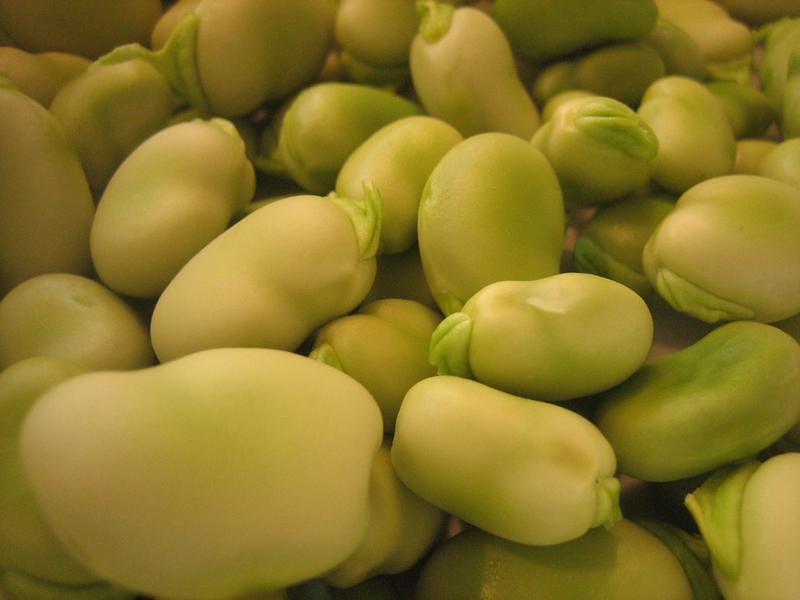
While it’s still a bit early to plant fava beans, by mid to end of August in cool regions and September and October in warm ones, you’ll be able to plant these legume to get delicious favas in late autumn.The plants stand 3- to 4-feet tall and have attractive white or red flowers. The pods are long, filled with fava beans that are great eaten at the green or immature stage. Steam or sautee them for a great fall treat. The plants also are great at soil building and are used as a cover crop.
Learn more about growing beans here
How to Grow: Cosmos
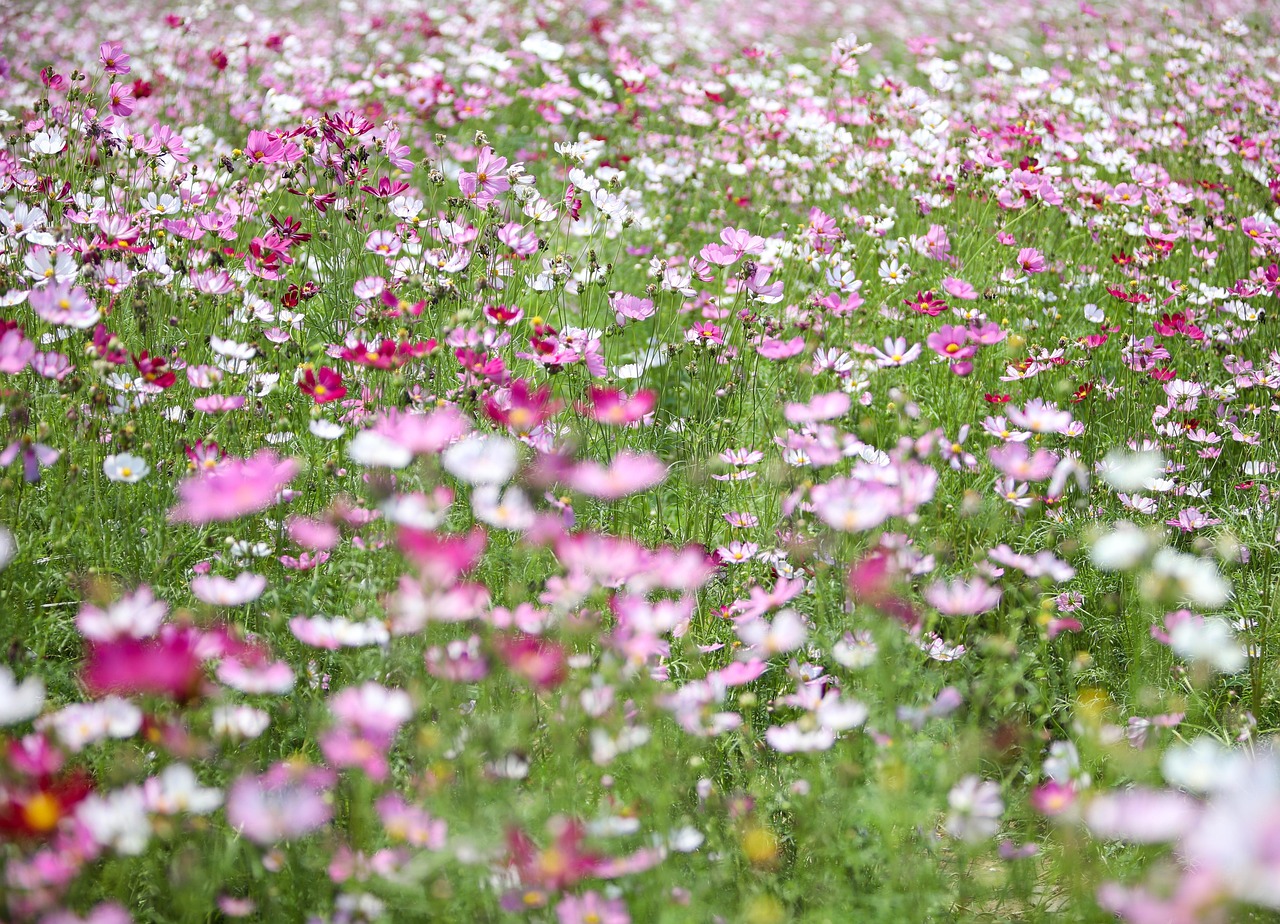
Cosmos are easy to grow, tall, annual flowers that feature airy foliage and cup-shaped flowers that flow in the breeze. The foliage almost resembles asparagus while the flowers can be single or double petaled. Cosmos look great planted in groups, are tolerant of many types of soils, self sow and have few pests. Many garden centers are still selling annual flowers and may have them on sale by now. It’s not too late to pick up a pack of cosmos to pop into your garden.
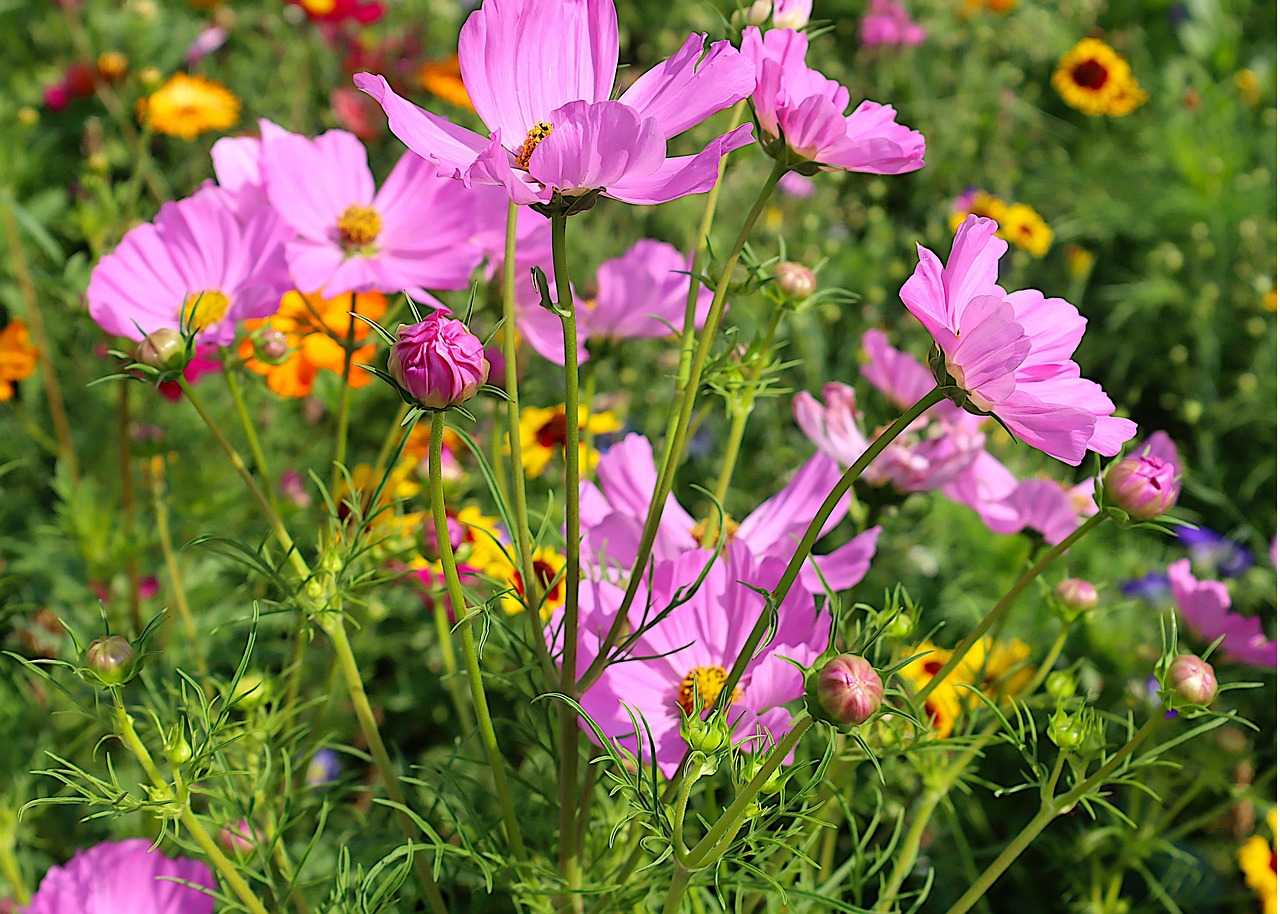
Cosmos varieties can stand 2 feet tall to 4 – to 5- feet tall depending on the type. I like the ‘Sonata Mix’, that is a bit shorter. It’s less likely the flop over when tall. Plant them in groups in the back of a border or in the front with shorter types. The flower colors tend to be pastel side, such as white, yellow, pink and red. They combine well with many other annual flowers, such as zinnias, and look great floating above the foliage of perennial flowers that have gone by such as daylilies. Butterflies love them as well, so consider planting them in your butterfly garden.
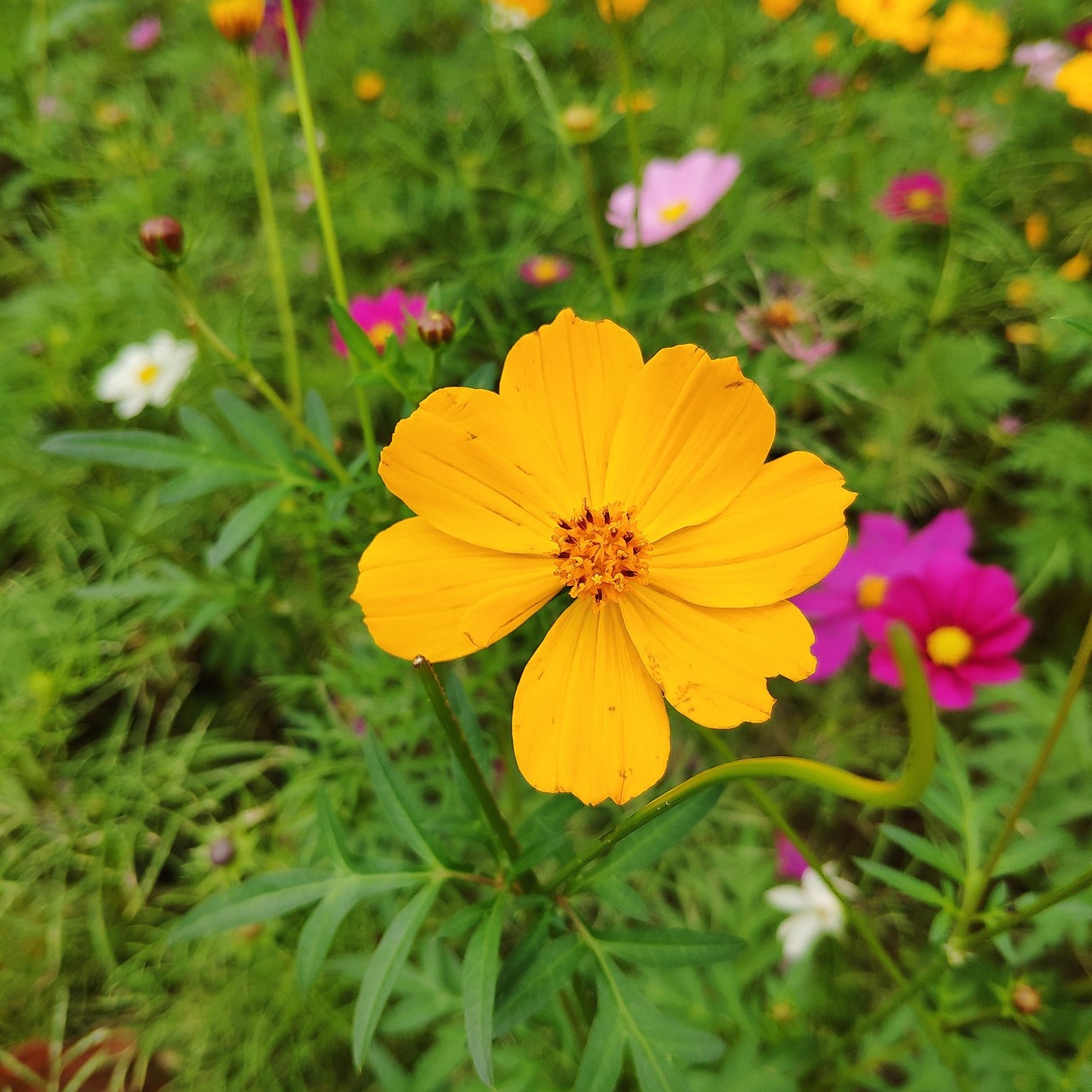
Plant in full sun on fertile, well-drained soil. Space plants 1 foot apart and pinch the tops to encourage branching and more flowers. Tall varieties may need to be grown near bushy perennials or be staked to hold them upright in storms. Cosmos flowers will continue to produce until frost and make great cut flowers for the table.
Go here for more on growing Cosmos
In Our Garden: Pest of the Month: Japanese Beetles
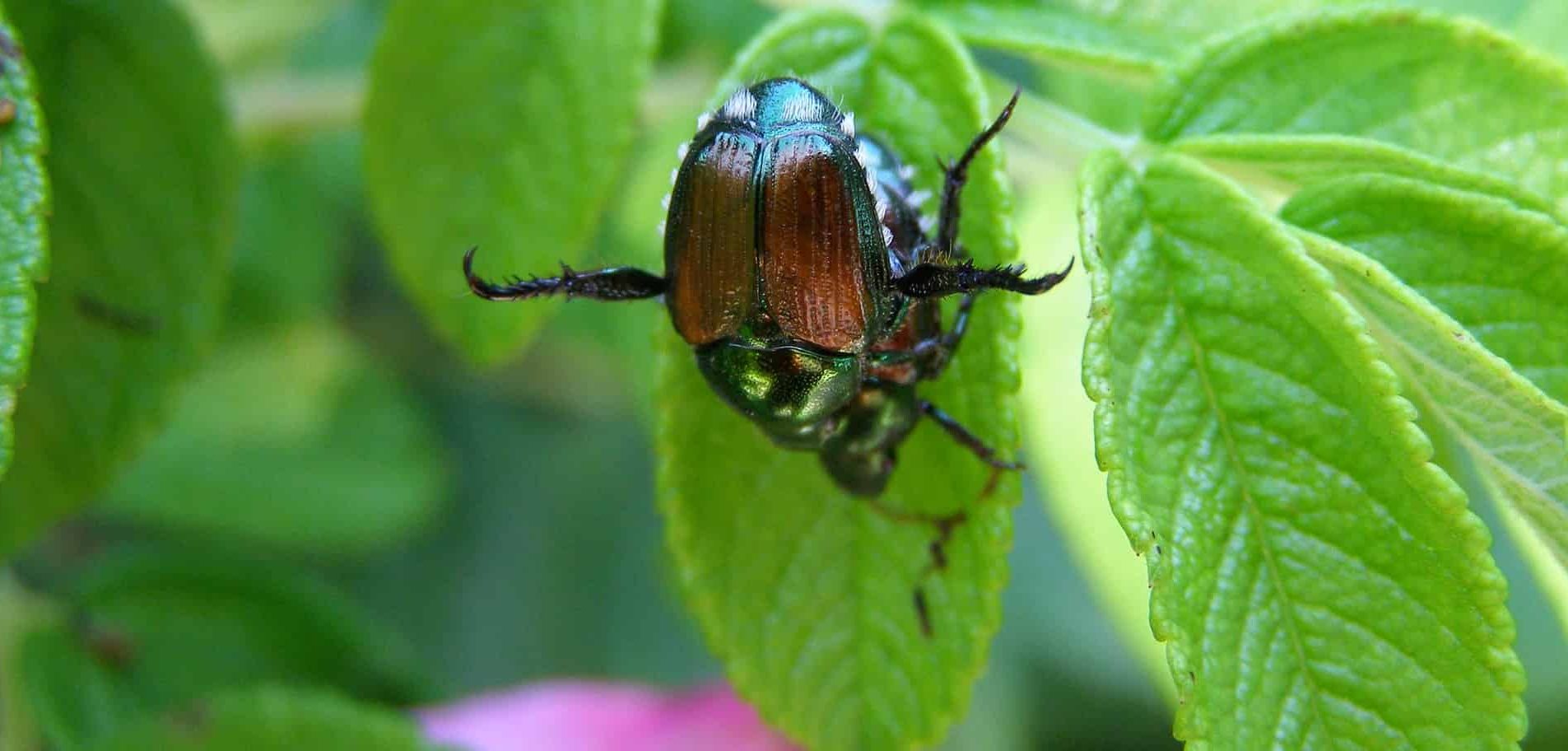
It’s that time of year again. The Japanese beetles will be emerging soon, if not already where you live, to feed on 300+ different plants in your landscape. They can cause a mess on roses, basil, beans, grapes, and raspberries, in particular, in our garden. The adult beetles feed for about 6 weeks and mate. The females lay eggs in the soil close to where they were feeding. The eggs hatch into c-shaped white grubs that live in the soil until next year when in June they pupate and form into adults again.
Control Japanese beetles with a multi-pronged approach. For small infestations, simply go out in the morning when the adults are sluggish and pick and drop them into a pale of soapy water. Do that daily and you’ll stay on top of the infestation. For bigger properties and infestations, try a few organic methods. We spray kaolin clay on raspberries and grapes to create a white, dusty environment on the leaves that the beetles don’t like. It doesn’t kill them. It just deters them from feeding. Japanese beetle traps are controversial. Some say they work great, while others say they attract more beetles to your yard. The key is to use this pheromone trap smartly. Place traps 200 feet away from your garden around your property. You can also work with neighbors to try trapping the Japanese beetles community wide. Place the traps out before the beetles emerge and place them 1 foot off the ground. That’s the cruising altitude of Japanese beetles. Clean out the trap regularly. Bacillus thuringiensis galleriae or BeetleJUS is a new Bt product that kills the grubs and the adults, but is safe for most other insects. Just don’t spray it near plants butterflies like to visit. It can be harmful to them.
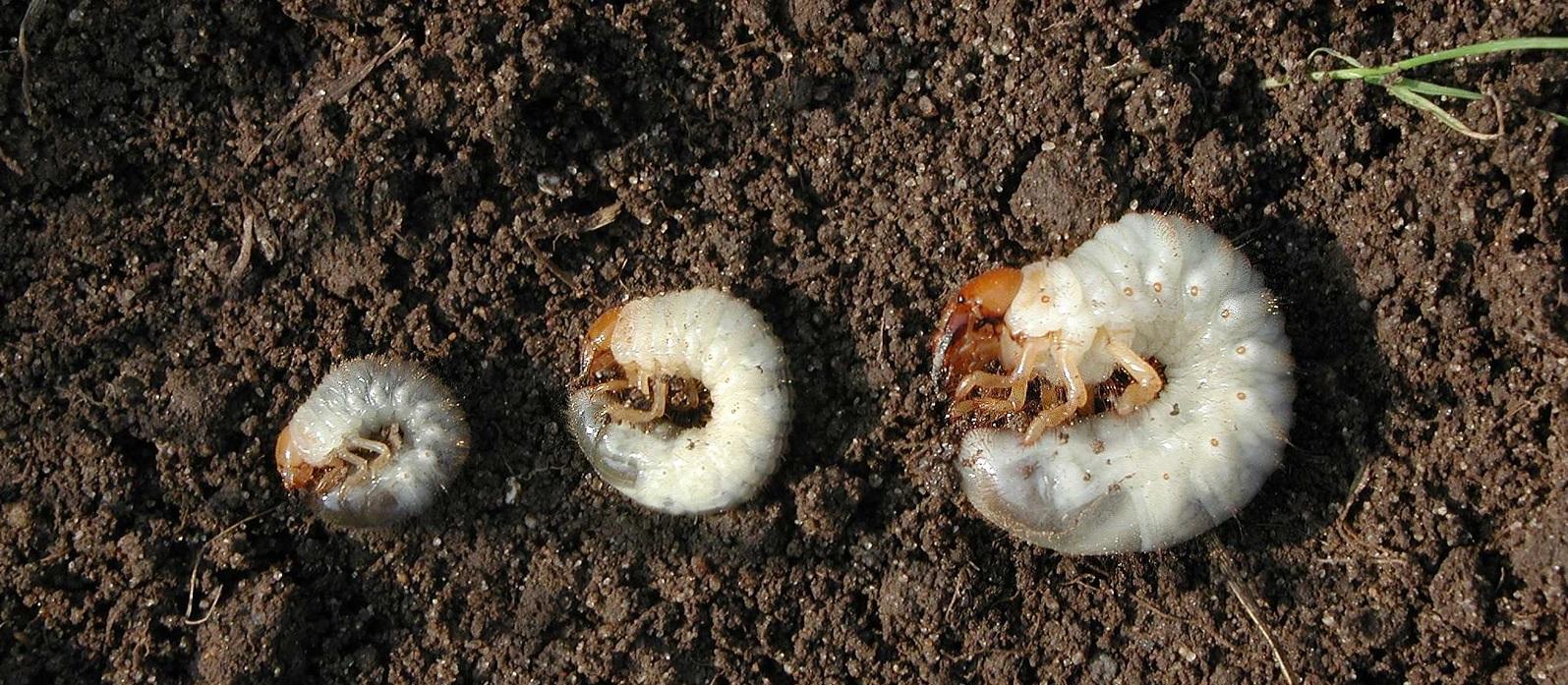
University of Maryland Extension
For long term control, try parasitic nematodes or Milky Spore Powder. These two biological weapons parasitize the grubs in the soil so need to be sprayed in May-June or September to kill the grubs while they are in the top layer of the soil. They need to be watered in well, and will kill the grubs effectively. They will need to be reapplied in most situations yearly. Even Milky Spore Powder does best with repeat applications.

